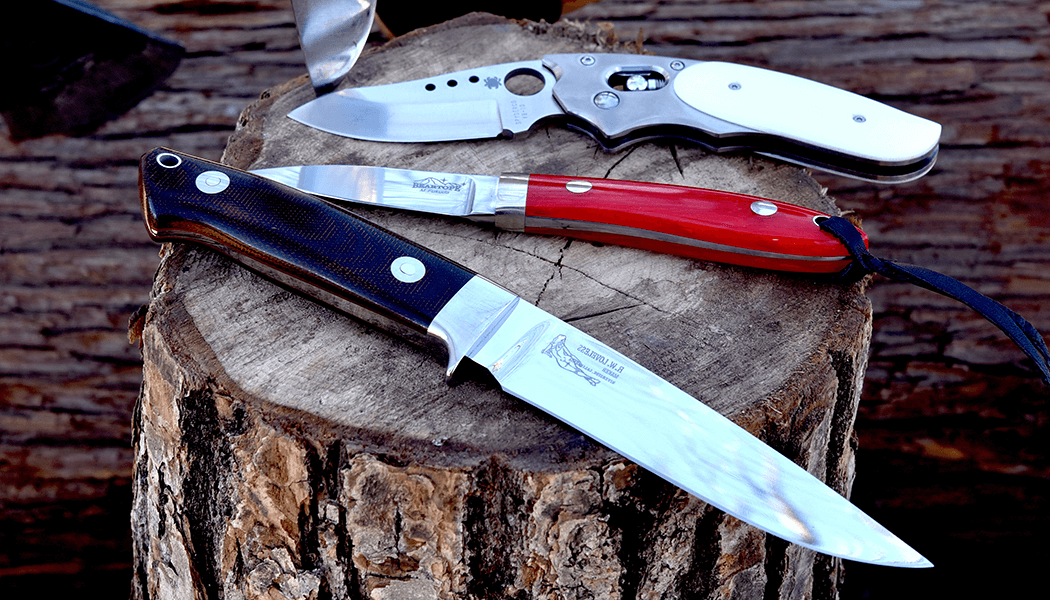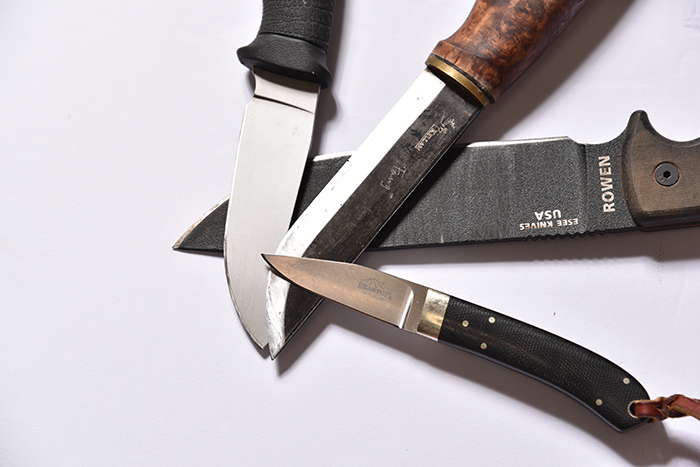
It's not just a normal guide book. But that's why I recommend the first book, "Outdoor Knife Manual."
table of contents
An introductory book that will make you feel honest about becoming a person who can master good knife
Knifes, which is said to be an essential equipment for outdoor activities, are actually a supporting character that is not always used only for general mountain climbing. Even so, I think that every person who is good at outdoor activities has a desire to be able to skillfully handle a knife that they are satisfied with on the field. It's also a good memory of when I was a student who was passionate about climbing the river, where I was admiring the sharp sword hatchet hanging from my waist for no reason.
However, it is true that for some reason I have always had the image that knives, which have evolved diversely around the world as essential tools for humanity to live, are too big to approach them with their half-hearted aspirations, and that I have been hesitant to seriously dive into that world. For now, if you are looking for an affordable knife that can be used for mountain climbing, you can easily get it, but when you are told to choose one that is irreplaceable for you, you will suddenly find yourself at a loss as to where to start and how to start.
Why are there so many types of outdoor knives and what are the characteristics of each?
What kind of knife do you have? How can you deal with it properly and deal with it correctly?
If you're going to seriously choose, I'd like to talk about the rich world of knives, not just as know-how, but rather the very rich world of knives that go beyond just a specific genre. I wanted to properly acquire this knowledge, but I have never had the encounter I had ever thought of before.
One day, by chance, Seibundo Shinkosha delivered this book, "Outdoor Knife Manual: From Using Knife, Mascots and Axes to Knife Making."
The content is packed with not only practical know-how about various outdoor knives, but also the historical and cultural background surrounding knives, as well as the thoughts of people who will inherit these traditions to the present day, and you can feel the author's passionate attitude beyond expectations. I was so much above my expectations, so I would like to introduce some of the appeals of this book.
It's not just a way to cut, but a know what kind of blade you should cut and how to cut
As the name suggests, this book is a basic style of explanation that begins with a detailed explanation of the various types of blades, differences in material, shape and function for each part, and covers safe handling and maintenance methods. First and foremost, I am amazed once again at the innumerable types of knives that exist depending on their purpose and purpose, but it is easy to understand and understandable as it tells you what each knives are created for and how they evolve (differentiate) in which parts.
What's more, the major feature of this book is that the types of blades introduced in the book are extraordinary, and not only are they practical, such as "folding knifes," "fixed blade knifes (sheath knife)," and "multi-tool knifes (thudded knifes)," which are common outdoors, but also range from hatchets and axes, as well as skirstens for peeling off animal skins, carving knifes for woodworking, and draw knives for stripping barks, and more. Regardless of whether it is used or not, it will allow you to enjoy the depth of the civilization of knives that humanity has evolved (along with a wealth of photographs).
Respect for the users and makers who have lived with the knife, which oozes through the explanation of the knife.
It is also important to be easy to understand with the carefully written explanations as mentioned above, but that is not what moved me to the point of making me want to cover them here. Rather, it is a respect for humans who have been nurtured in the civilization of knives, which can be seen here and there, and lies in a deep gaze.
This book is described as a manual guide written with content that is easy to understand even for beginners, but what I really want to convey is beyond this know-how, a praise for the noble way of life of people who live with knives while confronting nature. The more I read, the more I feel that way. For example, the author explains how he went on a hunt in North America with a rancher he met.
Dragging a large elk, dismantling it, and placing it on an ATV*. We set a bonfire by our side and grilled the elk. At this time, Wayne did it all with just a single pucco knife. As if it were just simple and obvious. This is a very natural thing to him, a Nordic immigrant. Real bushcraft is rooted in them as part of their lives. The knife, casually hanging on her waist, makes everything possible. With the wisdom cultivated. They use knives as tools to face life. I'll try to follow this spirit and face myself too.
Quote Note *ATV (All Terrain Vehicle): An all-terrain vehicle. Off-road four-wheel buggy.
When I asked Aizu Matagi to experience hunting again, this is what it was like.
After the matites had killed their prey, they began dismantling them with a knife-like knife. I was surprised at how skilled and sharp it was. It was thought to be a special knife, but it was made with old file. Everything from the sheath and the pattern are handmade. (Omitted) The definition of a good knife they seek is to be an extension of the hand. That's all. I would like to be a user who can show me the fact that my hands are part of my hands rather than words, using techniques.
What we see from this is the sense of human satisfaction that can be obtained by overcoming little knowledge of how to choose and use it (of course, this is essential as a basic premise) and mastering the use of a knife as part of the body, and the author's idea of what he should be like as a human being. This is the appeal of this book, which goes beyond the scope of manuals.
The actual patterns of custom knife making, which are featured in color over 36 pages in the second half of this book, can be said to be redundant as a user's guide. However, the author's pure passion for modern creators who woven the tradition of knife making in real time makes them feel comfortable reading them, making them think "it's great." This is a huge volume, but it's surprisingly easy to read at once.
Summary: Recommended as the first book to help you learn about the world of knives
It's a bit strange to say that I don't have much knowledge about outdoor knives, but I think this book will provide you with enough knowledge necessary for beginners, such as how to view, choose, use, and care for the types of knives used in the outdoors. It's also great for beginners that the use of photos is extensive. For those who just want that, it's certainly full of information, such as axes, hatchets, custom knives, and more.
Furthermore, this book offers a glimpse into the wide, deep richness of the world of knives and the entrance to the charms of "real" tools, which can be enjoyed beyond a guide book. In that sense, I recommend this book as the first book for those who really want to choose a good knife rather than those who want to gain knowledge quickly.
As an aside, I immediately contacted the author, Arai, at Outdoor Gearzine. I felt that anyone with such a love for tools would be able to provide some kind of information useful to readers of this site. It is unclear how this attempt will be realized, but it will surely be some new and valuable content. Stay tuned for future developments!




